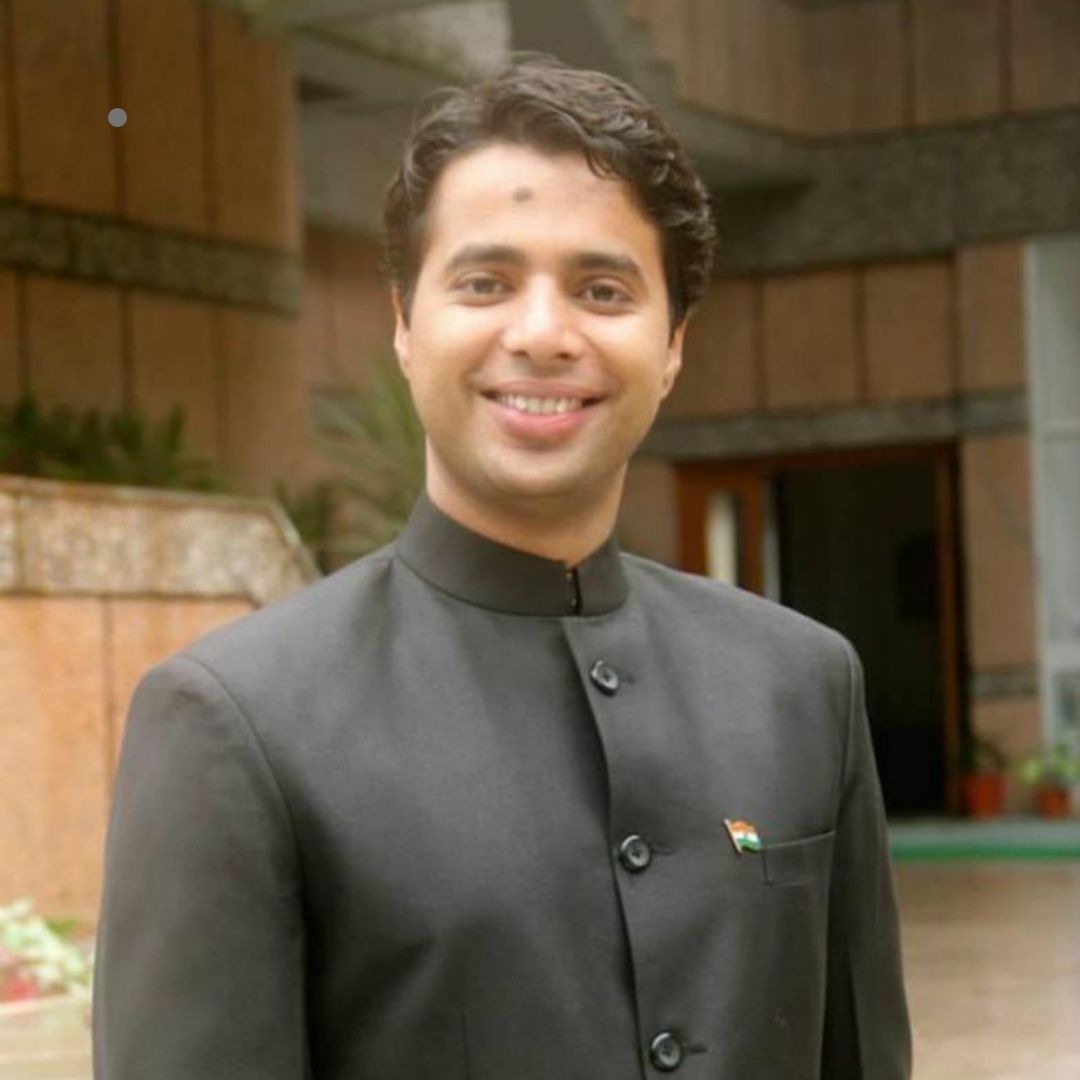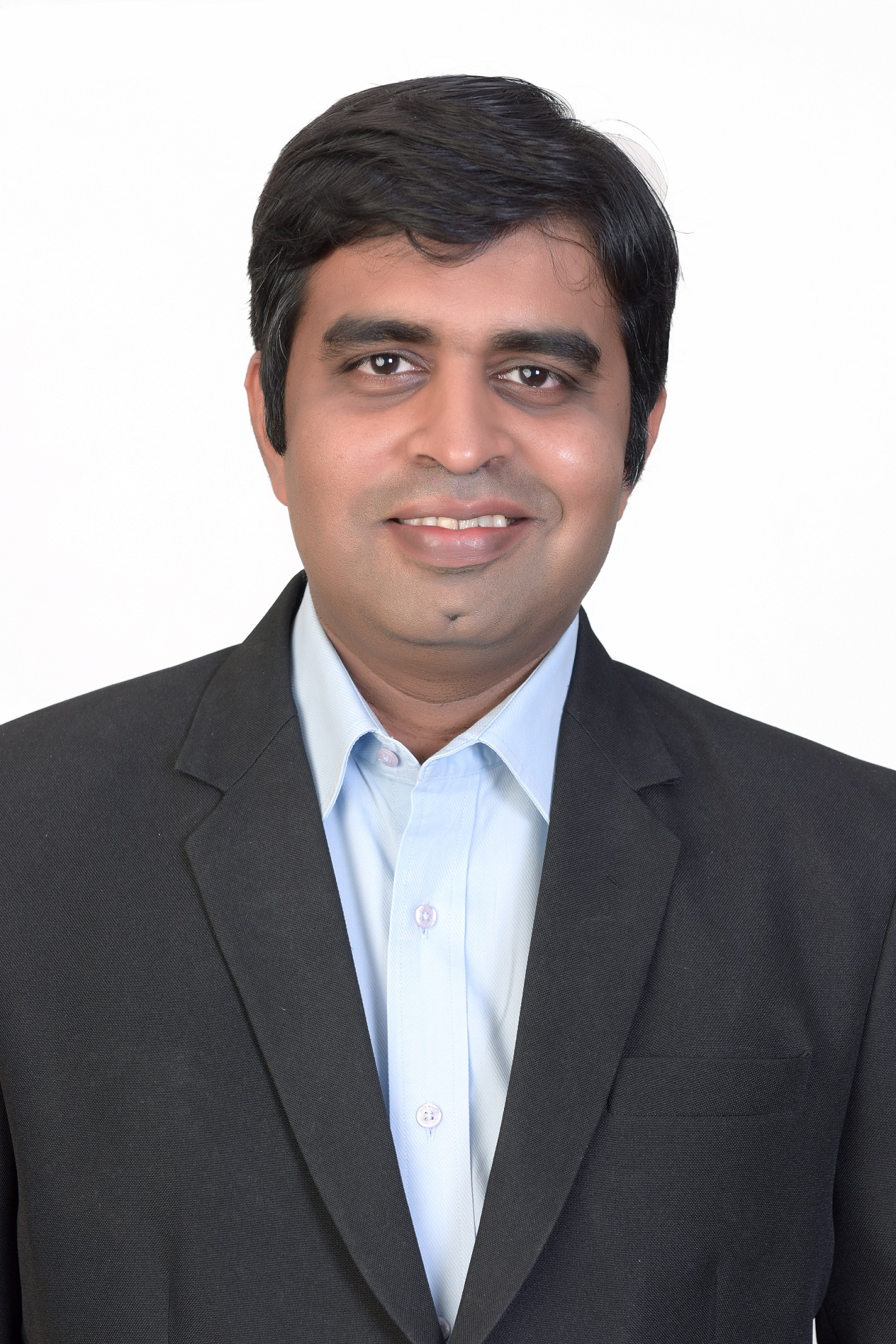The youngest in cadre and batch, Prashant Sharma is from the IAS 2012 batch of Uttar Pradesh. He is a computer engineer who is passionate about bringing technology into governance for efficiency and people’s doorsteps. Contributing towards the same, he has created apps like Chikitsa Setu, AskUP, CoronaJankari.in, Amethi Twitter, and Whatsapp Seva.
Chikitsa Setu was the first training app in the country for Covid warriors from doctors, nurses to hospital staff. It was launched in UP and Uttarakhand by the Chief Ministers, in J&K by the Lt. Governor, in Jharkhand and Chattisgarh by Health Ministers. It was also adopted by the Govt of India (the first officer-built app that has been adopted).
Below is a snippet from a recent interaction between team IT-Voice and Prashant Sharma, IAS (Uttar Pradesh):
Prateek: Given the population size of Uttar Pradesh, what are some of the unique challenges for the state administration? How can technology be the answer?
Prashant Sharma: UP is not only the most populous state in India, it is the most populous country subdivision in the world. It is also India’s fourth-largest state in the area, and at 828 persons per square km, it is also one of the most densely populated. Predominantly rural and agrarian, it actually is like a different country altogether. With great divides between eastern UP, western UP, and Bundelkhand, urban and rural UP, educated and non-educated, it poses a variety of challenges, as it behaves like a microcosm of diversity. So, one size fits all approach usually doesn’t work in UP. Therefore, while devising solutions for problems in UP, one has to keep in mind this diversity and the myriad of challenges it poses. What works in one part of the State might not work in another. Technology, however, works as a great equalizer. With high smartphone density and cheap 4G connectivity, bridging the digital divide and bringing information to everyone uniformly has become possible.
Prateek: Tell us more about the ChikitsaSetu App and its unique features. How popular it is amongst the corona warriors including the doctors, medical staff, nurses?
Prashant Sharma: “ChikitsaSetu” mobile app is India’s first training app developed for doctors, paramedical staff, and other ‘Corona Warriors’ to safeguard themselves from Corona Virus and COVID-19 in the line of duty. Made in collaboration with King George Medical University (KGMU) and the National Institute of Smart Government (NISG), it contains answers to their frequently asked questions about Coronavirus and COVID-19, in the form of short, easy to understand training videos. It answers a range of FAQs, from as simple as “how to properly wear or remove masks and PPE kit”, to more advanced ones like “the protocol of transferring COVID patients from ambulance to hospital”, or “cold chain management of COVID vaccines”. The app and all videos are bilingual (in Hindi and English), and are based on ICMR guidelines. The app also includes COVID helpline numbers of Central and State Government, as well as hyperlinks to the latest ICMR guidelines. The app has the facility of a live webinar with government officials, top doctors, etc for the benefit of its users.
Available on Google Play Store and Apple App Store, “ChikitsaSetu” has been downloaded more than two lakh times! It has proven to be of paramount importance, especially in rural and far-flung areas. Now, no doctor or nurse has to remember what needs to be done; they can simply open the app, select the appropriate video and follow the instructions. The Indian Medical Association has also found the app extremely useful and urged all their members to use it.
Prateek: Are there any plans to update the Chikitsa Setu App to a complete training application for frontline medical workers?
Prashant Sharma: Yes, indeed! “ChikitsaSetu” provides frequent, regular, and updated training related to Coronavirus and COVID-19 to doctors, paramedical staff, safaikarmis, police officials, and other Corona Warriors. The future roadmap of “ChikitsaSetu” was charted quite soon, after we saw the overwhelming success and acceptance of the app, both among the public and the authorities. During the first and second waves of COVID-19, we kept the app regularly updated with the latest guidelines, do’s, and don’ts of WHO and ICMR. When vaccination started, we incorporated more videos for cold chain management of vaccines and vaccination protocols. In the future, “ChikitsaSetu” is planned to evolve beyond COVID-19 and can be utilized as a single-stop solution for the training of medical professionals across the country. From tackling Japanese Encephalitis in the Terai region of UP and Bihar to tackling the Nipah virus outbreak in Kerala, this app can provide instant and genuine training, at the fingertips of people. It can be used by ASHA and Anganwadi workers for prenatal and neonatal care of pregnant women, lactating mothers, and children. There is no ceiling to the potential of “ChikitsaSetu”.
Prateek: What was the positive impact of the app during the peak of the pandemic?
Prashant Sharma: One of the key learnings while implementing “ChikitsaSetu” was that in situ learning goes a long way, rather than calling trainees to a central location and imparting training. This prompted us to provide training videos at everyone’s fingertips. During the peak of the pandemic, the movement of people, including doctors and training personnel was severely impacted. On the other hand, more and more people were getting infected and thus, the intervention was required. Also, in a continuously evolving diseaselike COVID-19, the app needed to be dynamic, with frequent and regular updates. During the second wave of COVID-19, there were widespread infections and the demand for medical advice was far more than the available supply. Therefore, we incorporated a WhatsApp service inside the app whereby a dedicated team of volunteer doctors provided free medical advice to users who were unable to access it otherwise. This service, along with regular functions of the app, became hugely popular and useful for people and provided them much-needed medical advice at their fingertips, at a time when hospitals were full and doctors were overburdened.
Prateek: Have other states shown interest in learning about the Chikitsa Setu App? Could the app be used on the pan India level?
Prashant Sharma: “ChikitsaSetu” app has been launched in five States and also hailed by the Central Government. The app has been launched in Uttar Pradesh and Uttarakhand by their respective Chief Ministers, in Jammu & Kashmir by Lt. Governor and in Jharkhand and Chhattisgarh by their Health Ministries. This has been possible due to the replicability and scalability of the app. We are currently in talks with a number of other States for launching the app in regional languages as well.
Prateek: Did you face any difficulties due to the shortage of tech acumen among the users?
Prashant Sharma: Not at all. The user interface (UI) of “ChikitsaSetu” app was developed keeping in mind the human element. In today’s world, the attention span of humans has become too short. Thus, as a conscious decision, all videos in “ChikitsaSetu” have been kept short, ranging from two to seven minutes. Moreover, an intuitive UI, like Netflix, was adopted which grouped similar training videos into categories and allowed horizontal scrolling within each category. Lastly, the search option in the app allows users to search for a particular training video of their choice.
However, we did face some other difficulties at the back-end. For instance, making training videos, especially in the time of COVID, was a huge challenge. By collaborating with KGMU Lucknow, we got the best medical professionals to record videos in accordance with ICMR and WHO guidelines. Thereafter, keeping these videos short and succinct, so that it is appealing to the masses was another challenge, which we overcame by subdividing questions into smaller, manageable parts, which took several iterations. Among all this, many of our team members also contracted COVID, but we kept on pushing forward. Another challenge was creating awareness about the app. Fortunately, the launch by respective Chief Ministers and recognition by Indian Medical Association helped in spreading the word.
Prateek: What innovative features could be integrated with the app in the near future?
Prashant Sharma: The app, being dynamic and scalable, is ready for change. Like all software, frequent changes in “Chikitsa Setu” are inevitable. In the past as well, the app has seen many changes by adapting to emerging problem statements. The feature of “live webinar” was added when we saw the demand for interacting with ICMR scientists and top doctors of the country in the initial days of COVID-19. Similarly, during the second wave, medical advice on WhatsApp was imparted daily to hundreds of people, via its newly-formed module. In the future, as well, more functionalities will be added as and when the need arises.
For any such interaction opportunities, you may write to us at [email protected].






